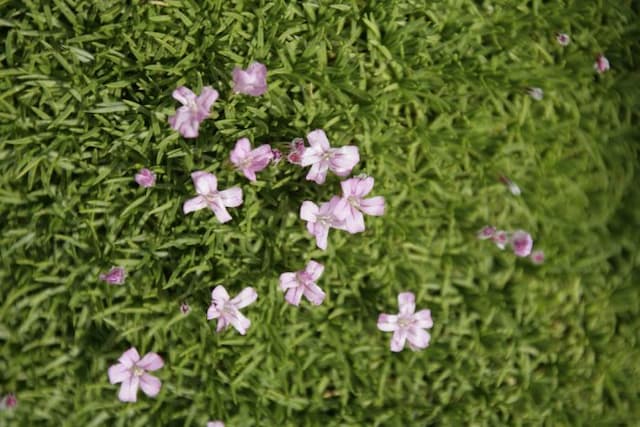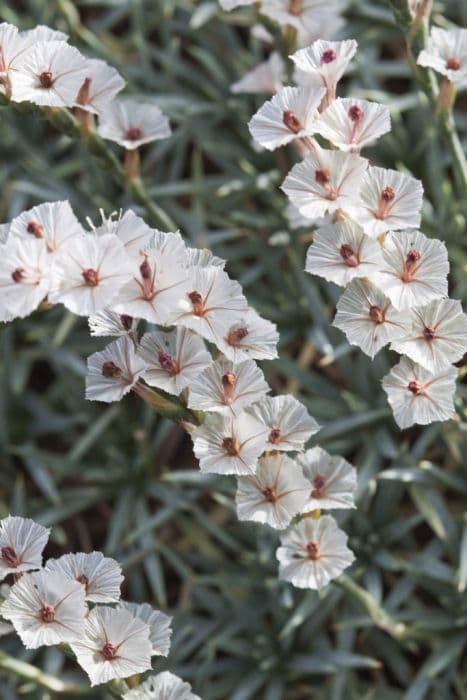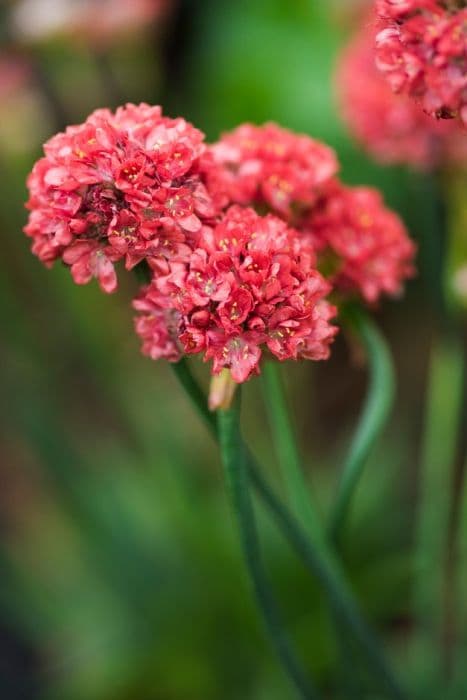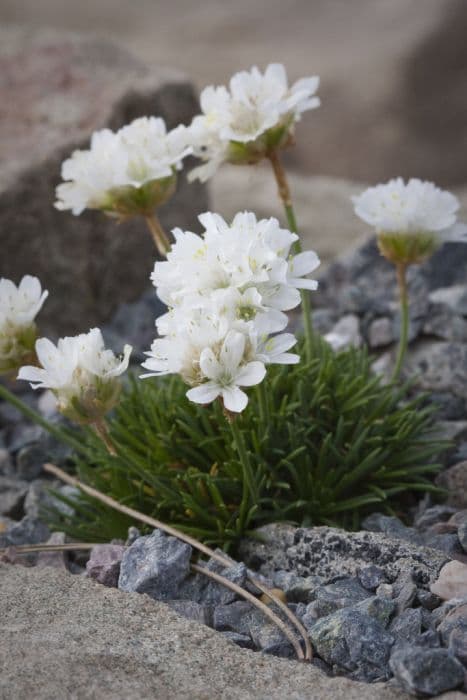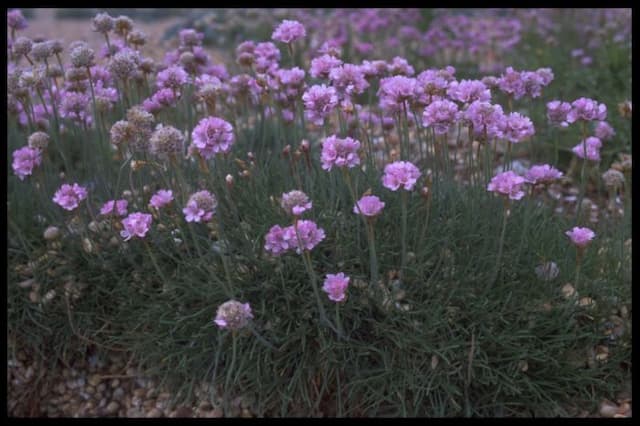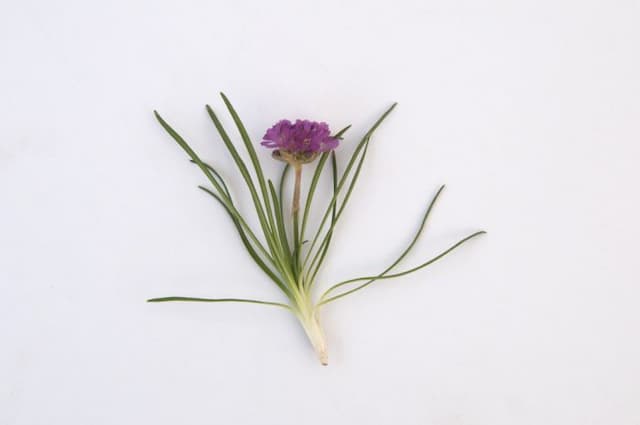Chinese plumbago Ceratostigma willmottianum Forest Blue = 'Lice' (PBR)
![Chinese plumbago [Forest Blue]](/_next/image?url=https%3A%2F%2Fplants-admin.emdemapps.com%2Fimages%2Fplants%2F%2Fimages%2F604b5c4db911f.png&w=3840&q=75)
ABOUT
The plant commonly known as Forest Blue hardy plumbago has a striking appearance, characterized by its vivid blue flowers that have a deep, rich hue. These flowers are small but abundant, covering the plant and providing a burst of color that is often sought after in garden designs. The foliage of Forest Blue hardy plumbago is no less attractive, with lance-shaped leaves that have a glossy texture, adding an elegant contrast against the vibrant flowers. The color of the leaves is a strong, green hue that may turn to a bronzed-purple in the autumn, providing seasonal interest. Branches on this plant are slender and may appear somewhat sprawling, giving the Forest Blue hardy plumbago a relaxed, yet structured demeanor within a garden setting. It's worth noting that Forest Blue hardy plumbago is liked not only for its visual charm but also for its robustness, making it a popular choice for different landscape applications. The combination of striking flowers and attractive foliage, along with its resilience, makes this plant a distinctive and appealing addition to any outdoor space.
About this plant
 Names
NamesFamily
Plumbaginaceae
Synonyms
Chinese Plumbago, Hardy Blue-flowered Leadwort, Forest Blue Leadwort
Common names
Plumbago larpentiae, Ceratostigma willmottianum.
 Toxicity
ToxicityTo humans
The plant commonly known as Plumbago is not widely regarded as a toxic plant to humans. There are no significant reports of poisoning or toxic reactions from the ingestion or contact with Plumbago. However, as with many plants, it is generally advised not to ingest any part of ornamental plants due to the potential for individual allergic reactions or gastrointestinal upset. Always exercise caution and keep plants out of reach of children who might accidentally ingest plant material.
To pets
Plumbago is not considered highly toxic to pets. However, it's always advisable to keep an eye on pets around plants, as individual animals can have different sensitivities and may react to plants that are typically non-toxic. If a pet were to ingest a considerable amount of Plumbago, they might experience mild gastrointestinal upset, which could include symptoms such as vomiting or diarrhea. If you suspect your pet has ingested a substantial amount of any plant and is showing adverse symptoms, it is best to consult a veterinarian.
 Characteristics
CharacteristicsLife cycle
Perennials
Foliage type
Deciduous
Color of leaves
Green
Flower color
Blue
Height
2-3 feet (0.6-0.9 meters)
Spread
2-3 feet (0.6-0.9 meters)
Plant type
Shrub
Hardiness zones
6-9
Native area
China
Benefits
 General Benefits
General Benefits- Attractive flowers: Produces bright blue flowers that add a pop of color to garden landscapes.
- Extended blooming period: The plant typically blooms from late summer to autumn, providing long-lasting visual appeal.
- Drought tolerance: Once established, it is relatively drought-resistant, requiring minimal watering in suitable climates.
- Cold hardiness: Can withstand low temperatures, making it suitable for a range of temperate environments.
- Low maintenance: Requires little care other than occasional pruning to maintain its shape and encourage flowering.
- Attracts pollinators: The flowers attract bees and butterflies, which are beneficial for the pollination of nearby plants.
- Erosion control: Can be used on slopes and banks for stabilization and to prevent soil erosion.
 Medical Properties
Medical PropertiesThis plant is not used for medical purposes.
 Air-purifying Qualities
Air-purifying QualitiesThis plant is not specifically known for air purifying qualities.
 Other Uses
Other Uses- Artistic Inspiration: The vibrant blue flowers and autumn foliage of the Plumbago can provide inspiration for artists and can be used as a subject in paintings, drawings, and other forms of art.
- Photography Subject: Garden and nature photographers may use the Plumbago for its striking color contrast against green landscapes.
- Educational Tool: Horticulturalists and botany educators may use the Plumbago to teach about plant hardiness, growth habits, or as an example of plants suited for rock gardens.
- Dye Production: Although not commonly known for this use, some plants can be used to produce natural dyes; the Plumbago's flowers could potentially be used to explore natural blue dye extraction.
- Culinary Garnish: The bright flowers, though not commonly eaten, could be used as a decorative, non-toxic garnish for plates or cakes, provided they haven't been treated with any chemicals.
- Crafts and Decorations: Dried Plumbago flowers can be used in floral arrangements, wreaths, or for other craft projects where a touch of blue is desired.
- Landscape Design Teaching: The Plumbago, with its spreading habit and seasonal color changes, could be used as a case study for teaching landscape design principles.
- Theme Gardens: This plant can be incorporated into “blue-themed” or “cool-colored” gardens to provide a consistent color scheme.
- Garden Borders: The compact and mound-forming characteristic of the Plumbago makes it suitable for use in creating clearly defined garden borders.
- Erosion Control: The Plumbago's spreading roots can help stabilize soil in sloped gardens and prevent erosion.
Interesting Facts
 Feng Shui
Feng ShuiThe Plumbago is not used in Feng Shui practice.
 Zodiac Sign Compitability
Zodiac Sign CompitabilityThe Plumbago is not used in astrology practice.
 Plant Symbolism
Plant Symbolism- Perseverance: The hardy nature of Ceratostigma willmottianum, commonly known as Chinese plumbago, can symbolize the ability to overcome adversity and persist through challenging conditions.
- Change: As Chinese plumbago's blooms typically change color through the season, they can represent transformation and adaptability in life.
- Integrity: The clear, bright blue flowers may symbolize honesty and maintaining one's values.
- Fresh Start: With its late blooming cycle, it can be seen as a symbol of new beginnings or a fresh start, particularly as it flowers when many other plants are fading.
 Water
WaterThe Chinese Plumbago, also known as Ceratostigma willmottianum 'Forest Blue', should be watered deeply once every week during its active growing season, especially in the absence of rainfall. Use about one to two gallons of water for each watering session to ensure the soil is moist but not waterlogged. During the winter months, reduce watering to every other week or less, depending on the plant's environment and soil moisture levels—you want to keep the soil slightly moist but not wet. Always check the soil before watering; if the top inch is dry, it's time to water.
 Light
LightThe Chinese Plumbago thrives in full sun but can tolerate partial shade. It will perform best when it receives at least six hours of direct sunlight each day. Place the plant in a location where it will get plenty of bright light throughout the day for optimal growth and bloom production.
 Temperature
TemperatureChinese Plumbago fares best in temperatures between 60 and 75 degrees Fahrenheit but can tolerate temperature extremes from as low as 0 degrees Fahrenheit up to about 90 degrees Fahrenheit. However, prolonged exposure to temperatures below the freezing point or extremely high temperatures may damage the plant. Ideally, keep the Chinese Plumbago in conditions that avoid these extremes for best results.
 Pruning
PruningPrune Chinese Plumbago in late winter or early spring to maintain its shape and encourage bushy growth. Remove any dead or damaged stems, and cut back the previous year's growth to a set of healthy buds. Pruning yearly will help stimulate flowering and keep the plant looking tidy. The ideal time for pruning is after the threat of frost has passed but before new spring growth starts.
 Cleaning
CleaningAs needed
 Soil
SoilThe Plumbago, also known as Ceratostigma willmottianum 'Forest Blue', thrives in a well-drained soil mix containing loam and organic matter with an acidic to neutral pH between 5.5 and 7.5. Amend the soil with compost or aged manure and perlite to improve drainage and soil structure.
 Repotting
RepottingPlumbago plants do not require frequent repotting; it's typically done every two to three years or when the plant becomes root-bound. Spring is the best time for repotting to allow the plant to establish in the growing season.
 Humidity & Misting
Humidity & MistingPlumbago prefers moderate humidity levels but is quite adaptable and can thrive in the average humidity found in most homes and gardens. It does not need any special humidity adjustments to grow healthily.
 Suitable locations
Suitable locationsIndoor
Keep Plumbago in a bright spot, away from drafts.
Outdoor
Plant in sun or part-shade in well-draining soil.
Hardiness zone
6-9 USDA.
 Life cycle
Life cycleCeratostigma willmottianum 'Forest Blue', also known as Chinese plumbago, begins its life cycle with seed germination, usually in spring when temperatures are mild and moisture is available. Following germination, the seedling undergoes rapid vegetative growth, developing a sturdy root system and foliage during the growing season. As an herbaceous perennial, it enters a flowering stage in late summer to early fall, producing vivid blue flowers that attract pollinators. Post-pollination, the flowers develop into fruit which contains seeds, completing the reproductive cycle. During winter, the above-ground parts of Chinese plumbago die back with the plant entering a period of dormancy, conserving energy within its root system. With the return of favorable conditions in spring, the plant breaks dormancy, resumes growth, and the cycle begins anew.
 Propogation
PropogationPropogation time
Summer-autumn
The most popular method of propagating the Ceratostigma willmottianum Forest Blue, commonly known as Chinese plumbago or Hardy plumbago, is by semi-ripe cuttings. This is typically done in late summer. To propagate by this method, one would select a healthy, non-flowering shoot and cut a segment that is about 4 to 6 inches (10 to 15 centimeters) long. The lower leaves are stripped off, and the cut end is dipped in rooting hormone to encourage root growth. The cutting is then inserted into a pot filled with a mixture of peat and perlite or a sand and compost blend. It's important to keep the potting medium moist but not waterlogged, and to provide a warm environment, which can sometimes be achieved by using a propagator or placing the pots in a greenhouse. Roots usually develop within several weeks, after which the new plants can be potted on.
